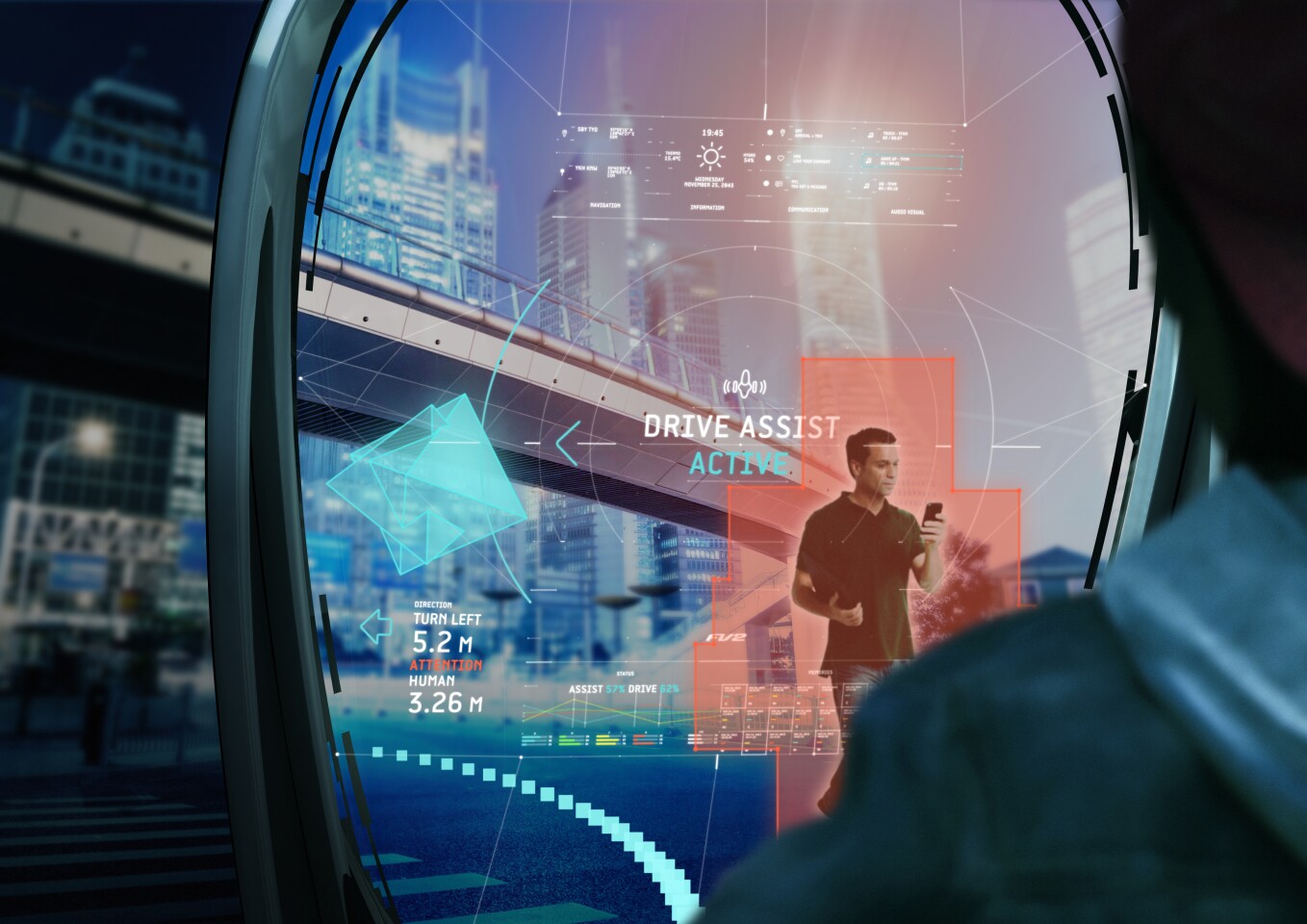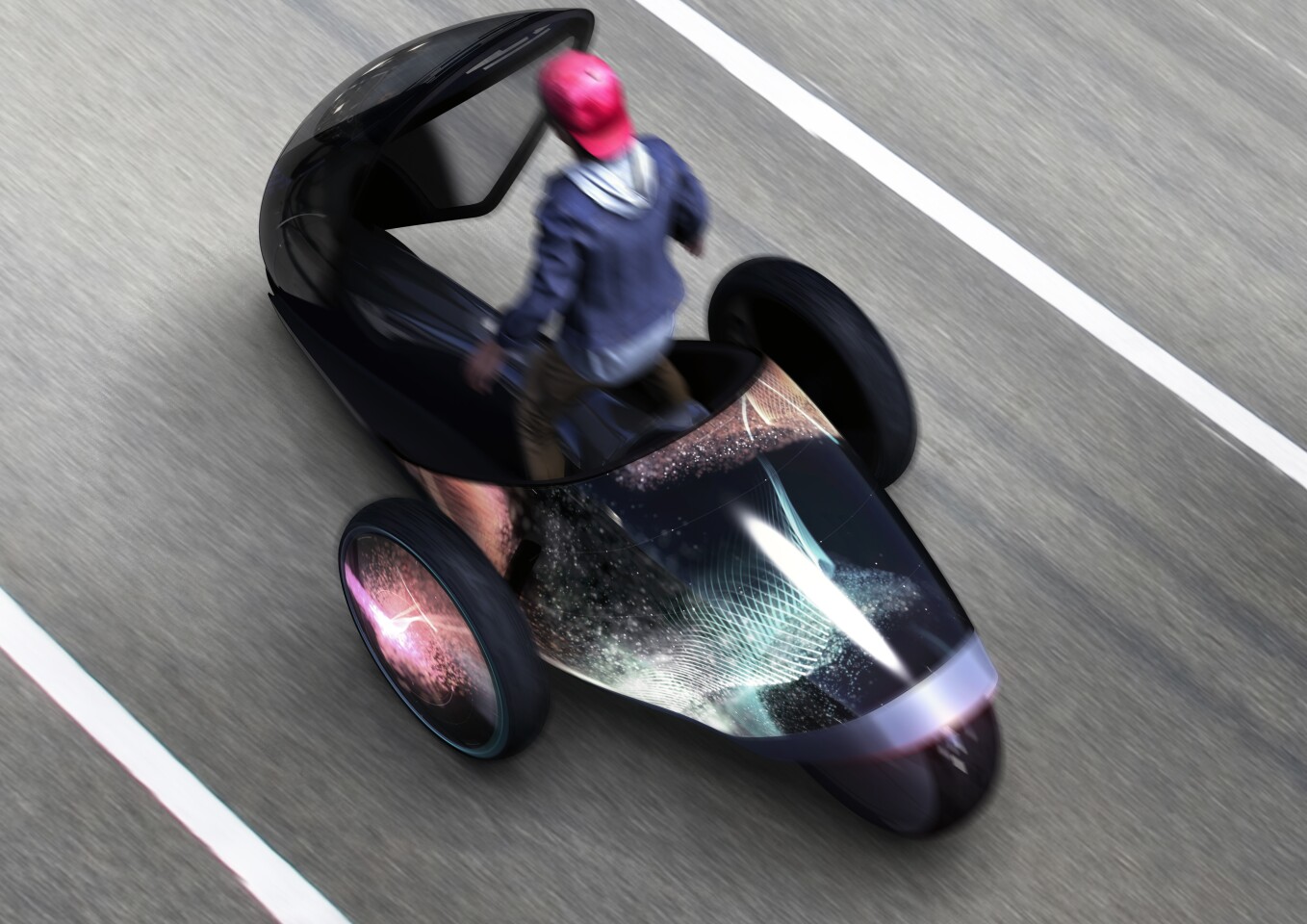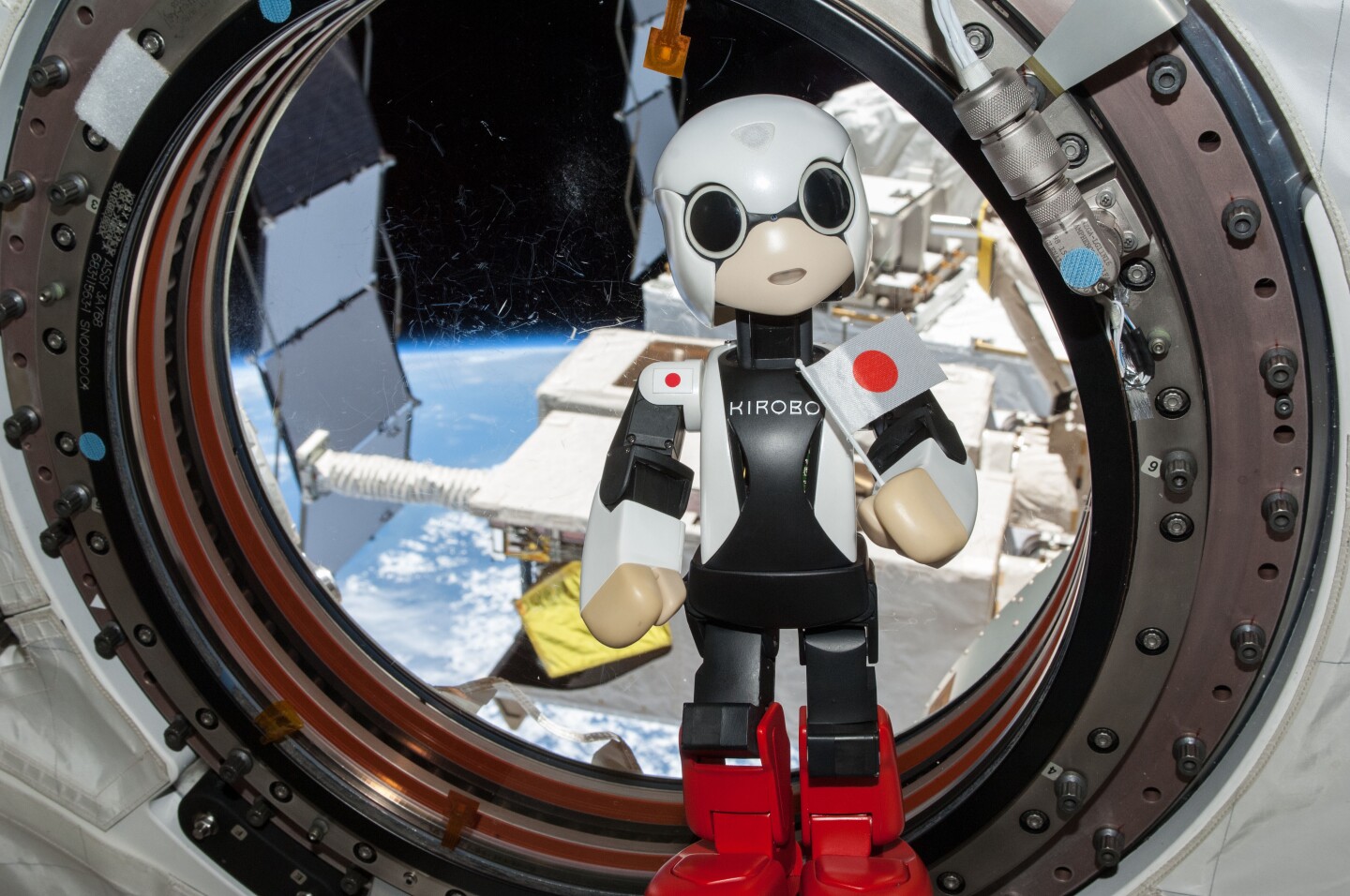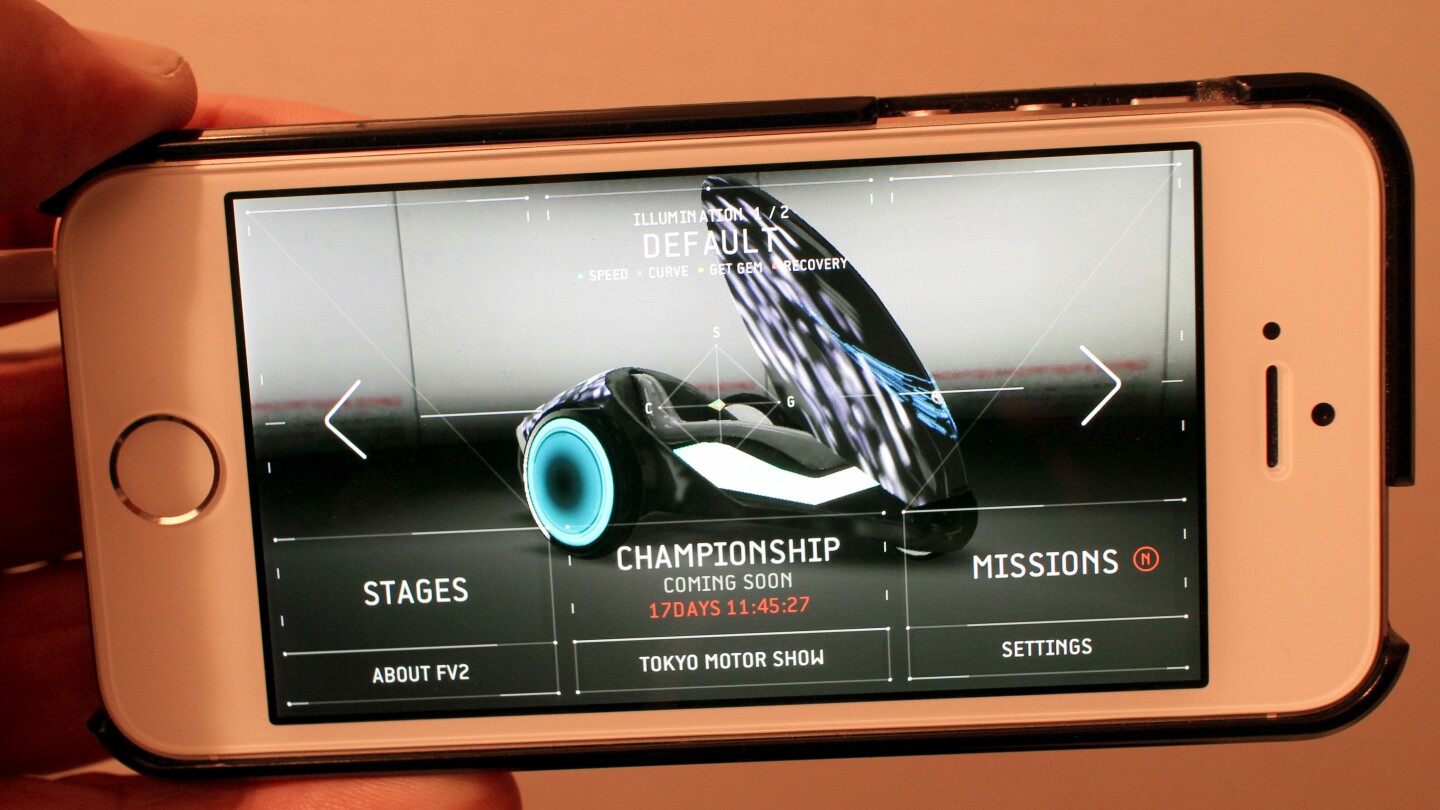Toyota's already bold pursuit of new vistas in the realm of personal transportation took another quantum leap forward today, when the Japanese giant released details of the FV2, a concept car more closely related to the Kirobo humanoid communication robot than any vehicle currently on public roads.
In trying to explain the FV2 succinctly, it's probably best to start with how it isn't different from a contemporary car. It has four wheels. That's about it, and what's more, it rearranges those four wheels in a diamond shape and it tilts in corners, a bit like a motorcycle with giant training wheels on each side.
The FV2 can be driven from a seated position with the canopy closed, or from a standing position with the canopy open, with the transparent canopy becoming a full-height windshield with an extensive augmented reality display.

In both cases, the vehicle is steered, accelerated and braked by body movement.
It's not the first Toyota to use an external high-resolution display on its exterior, with the FUN Vii doing the show rounds for the last two years after being shown at the Tokyo Motor Show in 2011. Toyota's experiments with expressing the driver's emotions on a vehicle's exterior date back more than a decade to the Personal Mobility Concept of 2003 and the POD concept of 2001, and the company patented this feature in 2002.

One of the many themes of the FV2 is the expression of Toyota’s “Fun to Drive” philosophy, and the computer-human interface we first experienced with the Segway and its natural weight-shift steering has been incorporated into the FV2 to create a greater physical bonding between car and driver.
As cars and robots converge, advanced technologies will also be used to enhance the driving experience by connecting emotionally with the driver, and the FV2 is the first vehicle to incorporate some of the lessons learned in the Toyota Heart Project, a new communication research study featuring the well-known Kirobo and Mirata humanoid communication robots.

Robots are being developed for many uses, and Japanese robotics research is well advanced in the area of companion robots using artificial intelligence plus voice analysis, image recognition of facial expressions, body movement and hand gestures to respond in such a way as to create an emotional connection between humans and robots.
Vehicle-to-vehicle and vehicle-to-infrastructure communications are also incorporated in the FV2, though the fine detail is not yet known.
Just how much this vehicle is a promotional exercise and how much it is real will be known a fortnight from now, when the Tokyo Motor Show opens.
One of the companies heavily involved in the FV2's public unveiling is Japanese advertising, public relations and communications giant Dentsu. The fiendishly clever communications company is melding all aspects of public communications for Toyota, and is responsible for a smartphone application that was released today via the the AppStore and Google Play application platforms.

We downloaded the free app and tried it, and it predictably involves a game and other pointers to what we expect will be quite an innovative and immersive display a fortnight from now at the Tokyo Motor Show.






















